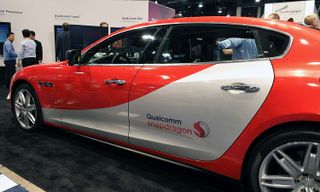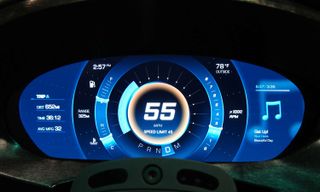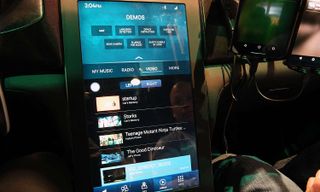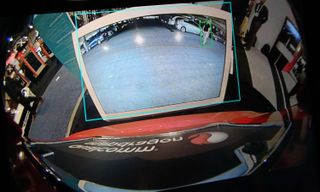Qualcomm’s Automotive Chips Power Audi Infotainment
At CES 2016, Qualcomm announced two new processors specifically made to power the communications and infotainment systems in modern cars.
Unless you’re an iPhone owner, most people who’ve bought a new phone within the last few years may have a device powered by one of Qualcomm’s chips. Now, Qualcomm is hoping for the same thing to happen for cars. The company announced a new auto-focused processor at CES 2016 and a partnership with Audi for use of its existing chip.

The two processors — the new quad-core 820A and the existing 1.5-GHz quad-core Snapdragon 602A — are dedicated automotive chips, based on existing Qualcomm mobile chips. Thanks to its new chip, the company hopes that car owners will get the same powerful and connected experience they get on their phones in their car. It’s such a logical transition that Audi has announced that all of its 2017 model vehicles will feature an infotainment system powered by the 602A.
MORE: Connected Cars: A Guide to New Vehicle Technology
The most important features of these new chips are good performance for integrating the multiple screens, cameras and sensors, accurate voice recognition, and speedy connectivity (802.11n/ac Wi-Fi). The 820A also will support Cat. 12 LTE for speeds up to 600 Mbps.
But specs are one thing, seeing what the chips can do in action are another. That’s why I strolled down to Qualcomm’s booth at CES to see how the company puts it tech in practice.

At its booth, Qualcomm’s had a bright red Maserati featuring an 820A that was hooked up to nine sensors, four cameras, four in-car displays and three smartphones. When I hopped behind the driver’s seat, I was greeted by a giant console display that seamlessly aggregated all the music and video content from every phone in the car into a giant playlist. Both passengers in the front and back can help choose tunes, creating a sort of impromptu DJ party.

But just because the music was blasting, didn’t mean I couldn’t talk to the people in back or make voice commands. Qualcomm setup the 820A so that it could cancel out audio interference, and use the embedded microphones to project my voice to the back without any feedback from the speakers.
Sign up to get the BEST of Tom’s Guide direct to your inbox.
Upgrade your life with a daily dose of the biggest tech news, lifestyle hacks and our curated analysis. Be the first to know about cutting-edge gadgets and the hottest deals.

One of the most impressive implementations of the 820A was the use of its Xeroth Machine Intelligence system, which uses pattern recognition to automatically draw a box around people seen by the car’s rear-facing camera. This is tech that would be addition to the host of cars with backup cameras, and even though the demo at CES was simulated using a flatscreen TV, Qualcomm said the system works just as well during its tests on the road.
Although Audi is currently the only major car maker that has signed on to use Qualcomm’s automotive-focused chips, with this level of sophistication, I wouldn’t be surprised to see a number of new partnerships announced in the future.
Sam is a Senior Writer at Engadget and previously worked at Gizmodo as a Senior Reporter. Before that, he worked at Tom's Guide and Laptop Mag as a Staff Writer and Senior Product Review Analyst, overseeing benchmarks and testing for countless product reviews. He was also an archery instructor and a penguin trainer too (really).
